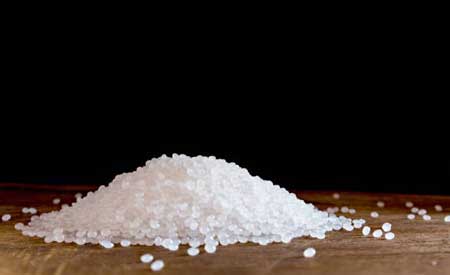When it comes to PCR resin, it is imperative that you ask about its antioxidant content. Antioxidants are relatively easy to test and are crucial in the stabilization of PCR streams. Insufficient stabilization causes crosslinking, which decreases MI and makes processing difficult. Adding additional antioxidants will protect the resin through its third heat history, ensuring that minimal degradation and MI preservation occurs. Read on to learn more about the benefits of PCR resin.
Post-Consumer Recycled Material

PCR is a key post-consumer recycled material. The plastic is used in the production of many products made of it can have a distinctive appearance. Reworked plastic is not sold off to other manufacturers, but it looks and feels similar to virgin resin. This difference is the primary advantage of PCR over virgin resin, as it can enhance sustainability messaging. A good PCR supplier will include devolatilization.
Environmental impact
PCR resin is a great way for brands to create recyclable products. By using recycled materials, these plastics use less energy and fossil fuel, reducing their carbon footprint. Although PCR resin is more expensive than virgin plastic, it is also a smart move for the environment. It helps brands move away from single-use plastic and away from landfills. Here are some of the benefits of PCR. Let’s take a closer look.
Cost
To replace virgin resin in packaging applications, PCR has several advantages over virgin material. For instance, it is more cost-effective and has consistent quality. Further, it is more environmentally friendly than virgin resin. Additionally, it is recyclable, which is an important factor for some manufacturers. To reduce costs and ensure consistent quality, PCR resins should be manufactured using recycled materials. Nevertheless, there are some challenges in using PCR resin in packaging.
Colors
Different types of PCR resin come in different colors. The majority of PCR is black, but a small percentage is white. However, the natural colors are in high demand. They are also the easiest to identify as sustainable products. To help customers identify products that are environmentally friendly, they should be slightly discolored. Below are examples of different types of PCR resin and their colours.
Regulations
To ensure consistency, PCRs must be manufactured with similar properties to their virgin counterparts. Although there are exceptions, these properties should be similar for a smooth transition between PCRs and virgin resins. While some resins are interchangeable, such as polystyrene for thermoform clamshells, most resins are selected for their specific functionality. For example, PET has excellent barrier properties and is the preferred choice for carbonated beverages. HDPE, on the other hand, does not have adequate barrier properties and is not suited for carbonated beverages.
Packaging options
PCR resin is an excellent choice for a variety of applications, including food contact. As an added benefit, PCR packaging is also a green choice, as it is FDA-approved for direct food contact. PCR resin pouches are a great option for many industries, including pet food, home care products, and baking. These pouches also offer a host of environmental benefits, making them ideal for a variety of industries.